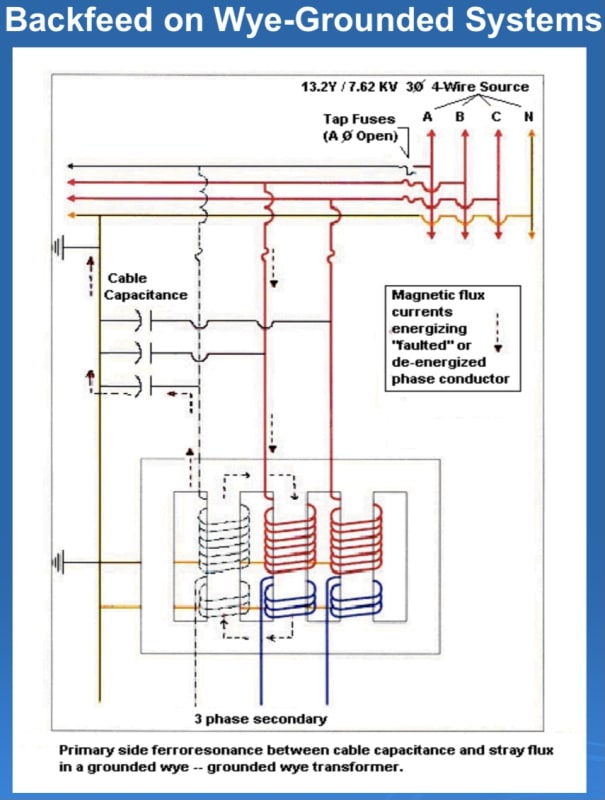I had the opportunity to be closely involved in a few power transfromer post mortem failure analyses back in the 90's. None of them ferroresonance though.
I'm just trying to think through what we MIGHT expect by thinking through the scenario. Below are my thoughts fwiw.... worth about as much as you paid for them.
High voltage at line terminals is expected and could lead to PRC's mentioned indications. (and of course he knows a lot more about transformers than me).
Different subject: Would there be a lot of conductor heating? With a high terminal voltage, exciting current would be a lot higher than normal exciting current but probably not much higher than normal load current on an RMS basis. And it's limited duration so you wouldn't think there would be much conductor overheating, certainly not in a general sense. If conductor overheating did occur, considering the highly nonsinusoidal nature of exciting current during overexcitation it would be localized to places where skin effect is expected (thicker non-stranded conductors). Where are those thicker conductors? I don't know maybe thick copper pads that bolt to the bushings. Perhaps a careful analysis of any unsual heating patterns (coking onto exposed metal conductors, or heating of insulating components in intimate contact with the conductors) and whether they correspond to places where skin effect is expected during highly non-sinusoidal exciting current from overexcitation might be something to look for.
Overexcitation can also cause higher fluxes which might cause more heating possibly in the core but especially in the tank (circulating currents). These things might show up by looking at your DGA combustible gases and ratios. I remember the phrase "hot metal gases" which are the particular DGA gases that associated with hot metal in contact with oil at various temperatures, and google tells me they are methane (CH4), ethane (C2H6), and ethylene (C2H4). Hot metal in contact with oil is not the only thing that generates those hot metal gases of course but a skilled dga-analyst can look at the whole set of gases and make an educated guess. Also if tank overheating occurred you might see discolored paint on the outside.
To the extent the event was interrupted quickly the above overheating symptoms might not show up at all.
A close look at the entire DGA and electrical testing and any available inspection results of course might reveal other clues.
EDIT - I remember there were some EPRI reports on one or more generator stepup transformer failures from solar storms that occurred in 1989. Those were also damaged primarily from overexcitation. And while it's not exactly the same (dc currents flowing in long lines through the HV winding to grounded wye point contributed to overexcitation in that case) there might be some characteristics in common if you can dig up those reports. Those were also prolonged events though.
=====================================
(2B)+(2B)' ?

